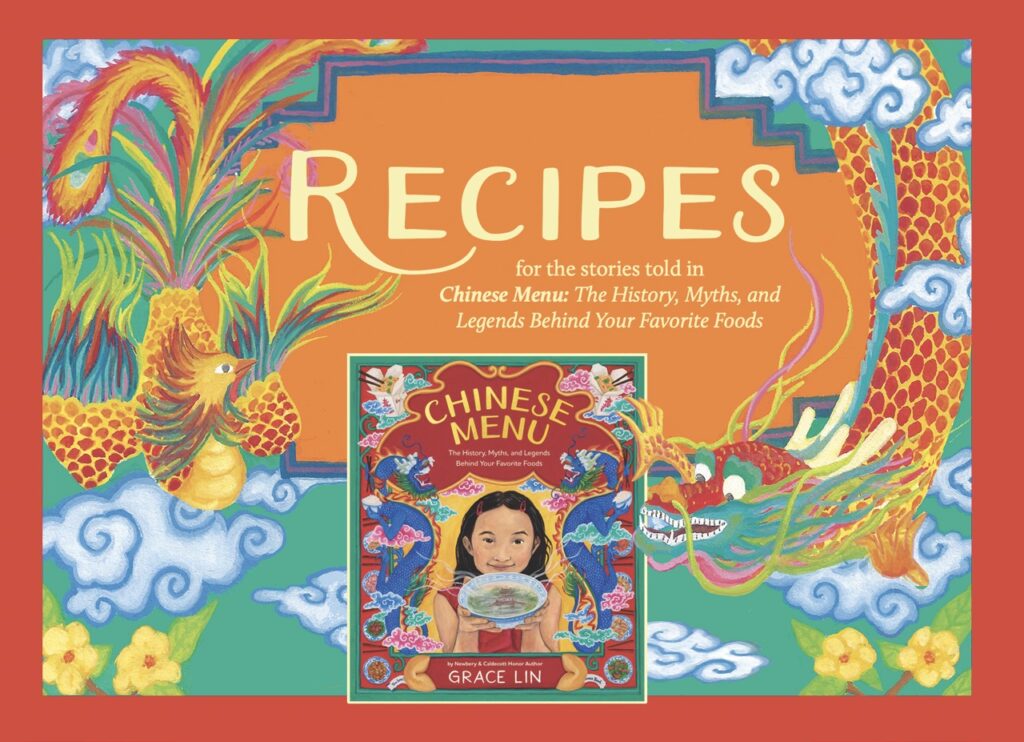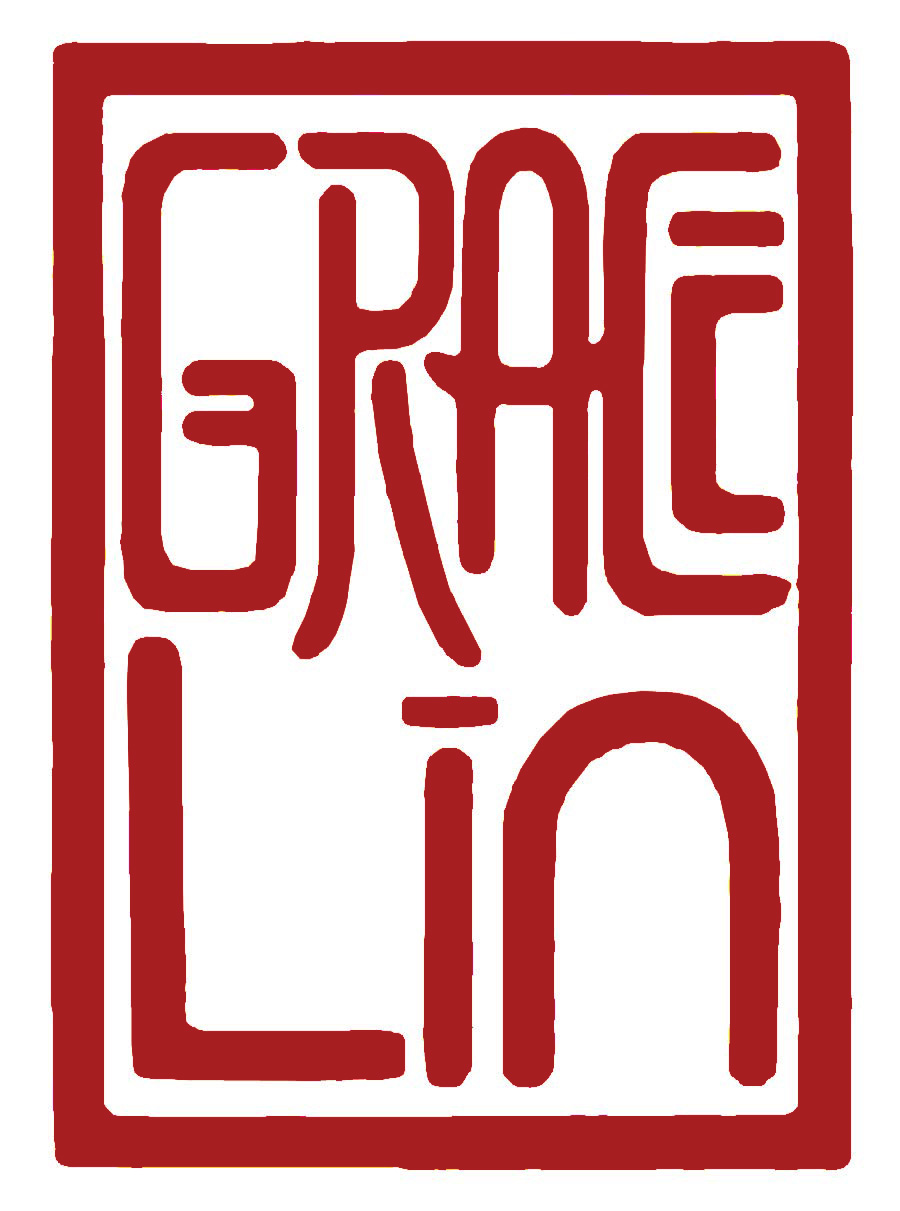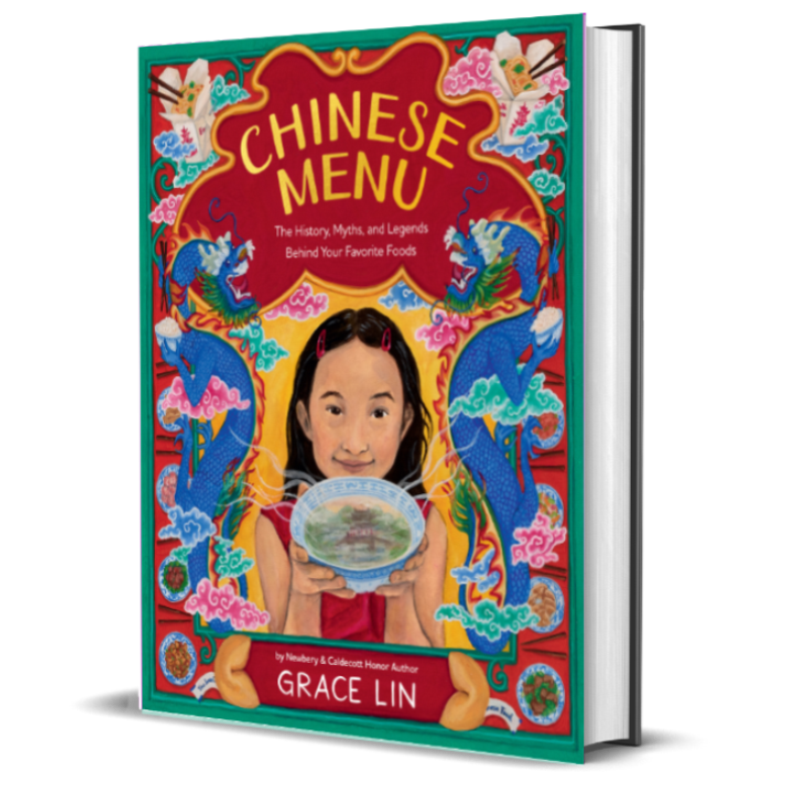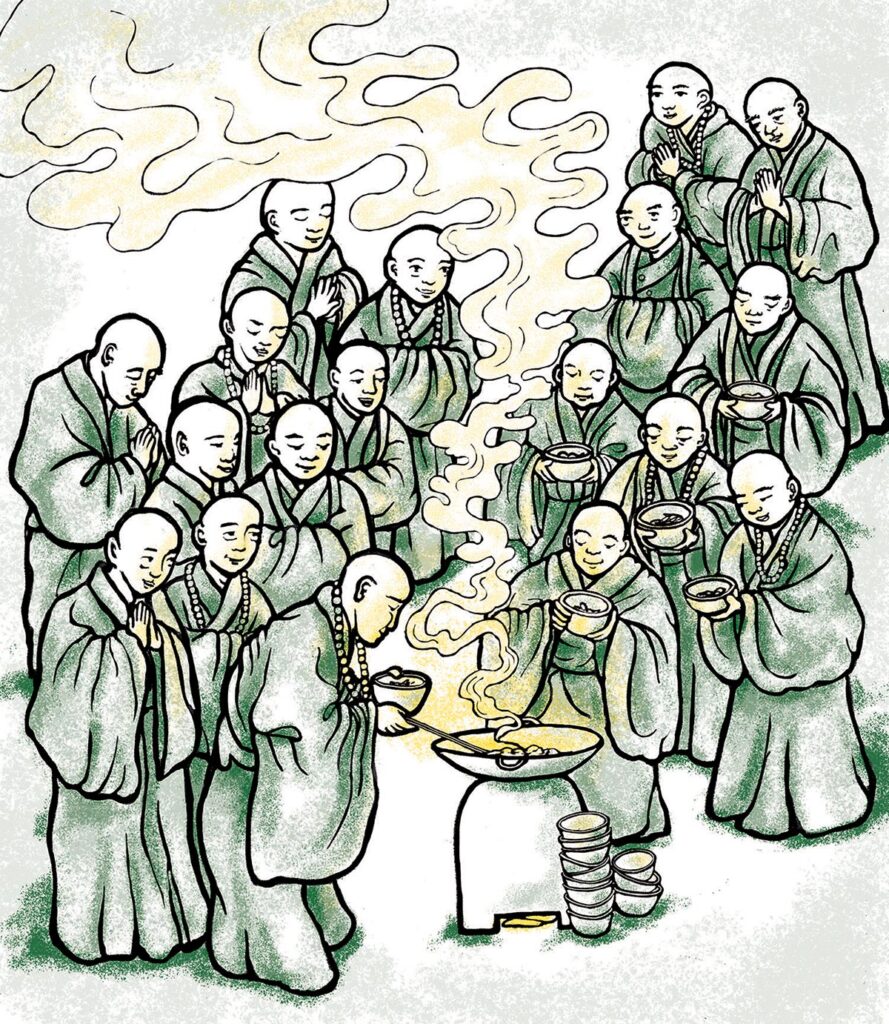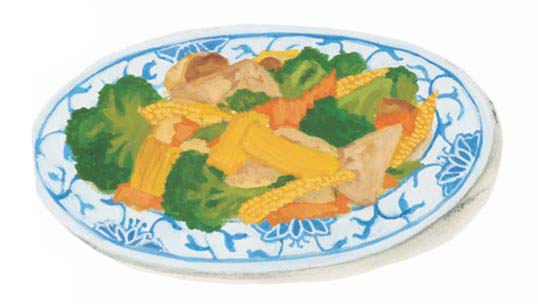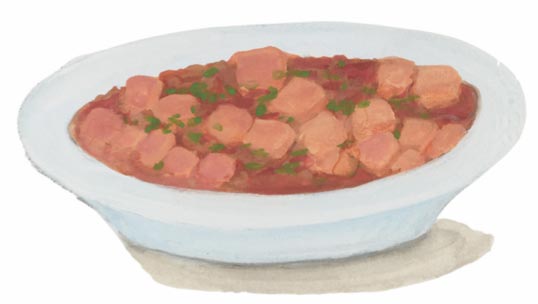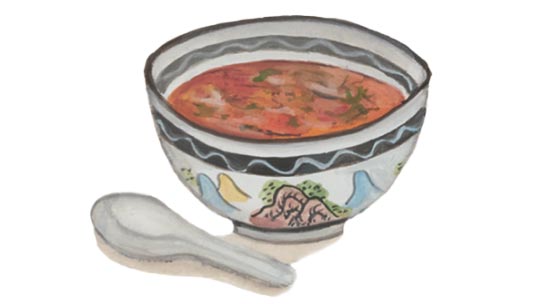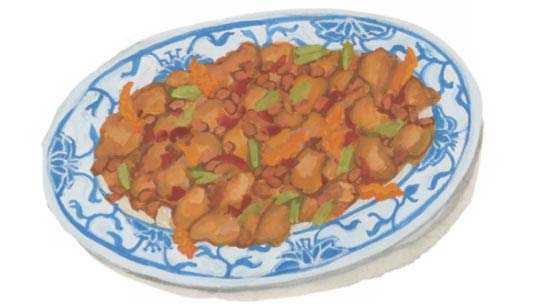Chinese Menu: The History, Myths, and Legends Behind Your Favorite Foods
Available NOW!
From fried dumplings to fortune cookies, here are the tales behind your favorite foods.
Do you know the stories behind delectable dishes–like the fun connection between scallion pancakes and pizza? Or how dumplings cured a village’s frostbitten ears? Or how wonton soup tells about the creation of the world?
Separated into courses like a Chinese menu, these tales–based in real history and folklore–are filled with squabbling dragons, magical fruits, and hungry monks. This book will bring you to far-off times and marvelous places, all while making your mouth water. And, along the way, you might just discover a deeper understanding of the resilience and triumph behind this food, and what makes it undeniably American.
With about 40 short stories (288 pages total) and in full color, this book is perfect for all middle grade students to read to themselves, for caregivers to read to young children and for adults to share with each other!
Reading level: Ages 8-12
Pages: 288 pages
Publisher: Little, Brown Books for Young Readers
Language: English
ISBN: 0316486000, 978-0316486002
Awards
- Readable Feast 2023 Food Writing/Memoir/Novel Winner
- 2023 PW Best Middle Grade
- 2023 BookPage Best Books
- 2023 Kirkus Best Children’s Book
Reviews
7 Starred Reviews!
★ from School Library Journal
gr 3-7–Newbery and Caldecott Honor author/illustrator Lin (Where the Mountain Meets the Moon) delivers a scrumptious smorgasbord of folktales, myths, and origins of popular items on the menu. The contents read like a who’s who of favorite foods on a Chinese menu, from dumplings, to teas, to fortune cookies. Highly researched, the book delves into each delicacy, telling where and when the foods originated. Each dish starts off with the author sharing childhood and family memories, an explanation of what the dish contains, and the significance of the dish in the Chinese culture (or whether it is simply a dish that Chinese restaurants have created to please the American palate). Following this is the true heart of the book: a folktale or myth to tell the story behind the food. In one, a dog with nine tails travels to the heavens to find rice grains, returning with just one tail, but also with the rice seeds, thus explaining why dogs have one tail and where rice came from. Each of these folktales can stand alone and holds up to rereadings, of which there will be many. Appetites will be ignited as tweens will want to try dishes new to them, and to rediscover their old favorites. Lin’s gorgeous, identifiable gouache and pencil illustrations add charm and depth to each item. Included is a food origin time line, a family recipe for scallion pancakes, end notes, bibliography, and index. VERDICT Not to be missed, grab your chopsticks, some oolong tea, and dive into this culinary treasure trove.
★ from Publisher’s Weekly
Via appetizing full-color gouache and pencil illustrations alongside lush, mouthwatering prose, Newbery and Caldecott Honoree Lin chronicles the origins of the most ubiquitous dishes in American Chinese restaurants. A table of contents, structured like a Chinese takeout menu, breaks down topics—such as soups, side orders, and chef’s specials—into bite-size sections that describe the meals’ sometimes mythical origins. By tracing the etymology of wonton soup, for example, the creator outlines how, when examining the dish name’s Northern Chinese roots, “wonton” can refer to “primordial chaos or the Daoist creation story of the world.” Lin allows common foods their time to shine, noting how the dumpling was created by a doctor more than 1,800 years ago to help villagers combat frostbite, and the fortune cookie has Japanese American beginnings. Other entries include dragon-filled tales of various teas, and the backstory and etiquette surrounding chopsticks. Each selection, often prefaced with a personal anecdote and historical or folkloric context, whisks readers back in time; some entries highlight ancient tales about magic fruits, while others address troubling periods of strife and discrimination. These foods—and their stories—find common ground in their deep-rooted connection to Chinese American culture, which is further anchored by an author’s note that details the book’s inspiration. A family recipe and endnotes conclude.
★ from The Horn Book
Food, folklore, and history combine for a mouthwatering and enlightening read in Lin’s collection of stories about more than twenty dishes, drinks,, and staples of Chinese and Chinese American cuisine. The table of contents is organized like an American-style Chinese restaurant menu, with appetizers, soups, “chef’s specials,” and desserts; chapters on tea and chopsticks (along with origin stories) are also included. Lin opens each section with a brief introduction, sharing her own food memories and culinary or symbolistic details. While most of the tales involve mythical creatures or magical events, a few historical figures make appearances, including Ming Dynasty explorer Zheng He, Italian explorer Marco Polo, and Emperor Kublai Khan. Lin’s vivid illustrations round out the experience with digitally colored drawings in the style of traditional ink paintings for the folktales, and realistic renderings in gouache of the actual dishes. An illustrated timeline and map of China are included in the introduction. An author’s note, extensive end notes, a bibliography, and a scallion pancake recipe are appended.
★ from Kirkus Reviews
The hidden histories, fantastical folklore, and tastiest tidbits of American Chinese cuisine.
Organized like a meal, from appetizers and soups to chef’s specials and desserts, Lin uncovers the secrets behind the most famous dishes of American Chinese restaurant menus. Each section contains a brief introduction, with first-person narration offering context through personal anecdotes and historical facts. Then it’s off to the banquet: a bounty of wondrous, romantic, and sometimes grotesque tales that trace the origins of rice, wontons, Peking duck, and more. As with much folklore, the stories sometimes contain references to dark or mature topics (poverty, suicide, concubines), but thoughtful, age-appropriate commentary strikes an effective balance. The volume is liberally illustrated—contemporary images are rendered in full color, while illustrations of the stories appear in limited palettes, drawing a clear distinction between the past and the present. Many tales take place in dynastic China, but stories like “General Tso’s Chicken” and “Chop Suey” underscore the truly American natures of these dishes. Although the vast ground covered here could, in less skilled hands, overwhelm the uninitiated—the dishes chronicled extend as far back as 7000 BCE and up to the 1950s—Lin’s conversational asides and the book’s meticulous supporting materials, including a timeline and extensive endnotes, ensure that readers never lose their way. The illustrations and tone indicate a young readership, but there’s much here for readers and eaters of all ages.
★ from Booklist
Author Lin’s parents were Taiwanese immigrants, and she grew up using chopsticks (or trying to, at least) and eating Chinese food. She shares her love of traditional Chinese fare by offering a combination of warm, personal reminiscences, food-related customs and superstitions, and numerous Chinese folk tales (she indicates she tried to stay as close as possible to original versions but admits to occasional edits and additions). The result is an engaging immersion into Chinese culture, incorporating elements that range from ancient to modern times and from imperial courts to family dinner tables. Main sections consider chopsticks, tea, appetizers, soup, main dishes, side dishes, and desserts. Each begins with a description of the item, its history and significance in Chinese society (or the lack thereof, for dishes such as egg rolls or fortune cookies), variations (along with exhortations to try new and unfamiliar versions), and three or four stories, complemented by intriguing illustrations that often evoke ancient scrolls. Lin brings in history, geography, and celebrities (Kung Pao, General Tso) and finishes up with chapter notes, an extensive bibliography, and her mother’s recipe for scallion pancakes. This celebration of Chinese cuisine and culture is factual, engaging, and mouthwatering.
★ from School Library Connection
This book should come with a warning label: “It will be tough to
avoid cravings for Chinese food while reading!” Award winning
author Grace Lin has created a unique story within a story about
how our favorite Chinese food dishes originated. Each origin story features a myth or legend about each unique appetizer, entree, or side dish. The content practically provides literature teachers with a ready-made folklore lesson. The charming and colorful illustrations resemble a Chinese restaurant menu. History enthusiasts will especially appreciate the pictorial timeline of foods by dynasty and the regional map with major cities so readers can place where the dishes were created. The text is organized in chapters on chopsticks, tea, rice and noodles, and main dishes. Lin explains the Americanization of many popular Chinese dishes, points out dining taboos, and clarifies important symbolism, especially for the New Year. This book is ideal for short read alouds, readers theater, or family cooking nights based on one of the included recipes.
★ from BookPage
Lin describes American Chinese dishes—which have been adapted and changed from those found in China—as “the flavor of resilience, the flavor of adaptability, the flavor of persistence and triumph. Above anything, this food is the flavor of America.” Chinese Menu is jampacked with chapters that are organized according to course, including tea, appetizers, soup and chef’s specials. Foods like Bird’s Nest Soup, General Tso’s Chicken (he was a real general during the 1850 Taiping Rebellion) and Chop Suey make an appearance. There’s history, too: Lin explains that the fork may have been invented in China, but that as chopsticks evolved from long bronze cooking tools to their wooden form, Confucius advised people to use them to eat instead, believing that knives and forks resembled weapons and brought disharmony to meals. Adding to the offerings are numerous color illustrations, diagrams, a map of China, informative endnotes, an extensive bibliography and an illustrated timeline showing when various dishes emerged. There’s also a recipe for Lin’s mother’s scallion pancakes.
Though all of the above is compelling, what makes this book shine are the numerous retellings of food-related myths and folktales, many of which Lin first heard as a child at the dinner table. A story about the origin of Dragon Well Tea involves a dragon, a poor old woman and a mysterious stranger who knocks on her door. Dumplings are said to have been invented during the Eastern Han Dynasty (24–220), when a doctor named Zhang Zhongjing found an innovative way to treat villagers’ frostbitten ears during the Lunar New Year. Some tales are not for the faint of heart and involve subjects like death and poverty, but throughout, Lin’s sensitive narration remains mindful of her young audience.
Lin’s illustrations are further icing on the cake—starting with the book’s ornate cover showing a young girl holding out a steaming bowl of soup, inside of which readers see the faint suggestion of a bridge and a building, hinting at the tales waiting inside.
Chinese Menu is a treat in every way: an exceptional compilation that can be read all at once or taken out from time to time as a reference while eating certain dishes—a family ritual that all ages will enjoy. Either way, it’s scrumptious!
Sneak Peek!
Check out a special sneak peek of one of the many stories in the book, from the Kids Ask Authors podcast: Episode #145: Special Lunar New Year episode “The Legend of Buddha’s Delight” storytime with Grace Lin!
One Minute Myths
In a little over a minute, Grace tells the myths behind some of your favorite American Chinese food.
Chopsticks
Fortune Cookies
Rice
Grace and Chef Maggie Zhu make Buddha's Delight! Watch the video series:
